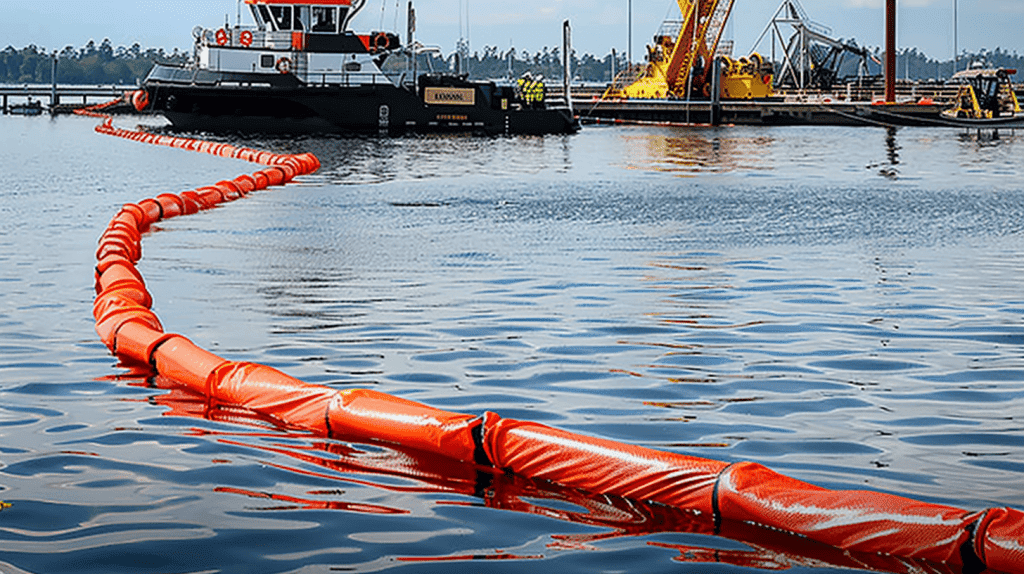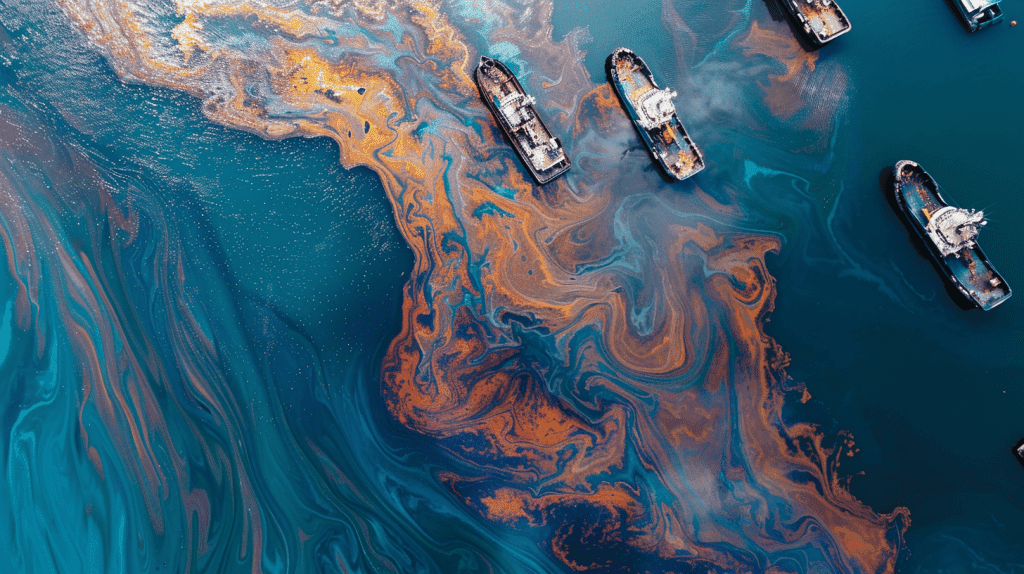Spill containment booms are essential tools in managing and mitigating the impact of spills, particularly in aquatic environments. These tools are crucial for safeguarding the environment and ensuring quick response to accidental discharges of oil, chemicals, and other hazardous materials. In this article, we will explore what spill containment booms are, how they work, and their importance in spill response efforts.
What Are Spill Containment Booms?
Spill containment booms are floating barriers used to contain and control the spread of spills in bodies of water, such as oceans, rivers, lakes, and harbors. These booms are designed to float on the water’s surface while preventing the spread of contaminants by creating a barrier that traps and holds the spill in a confined area.
Types of Spill Containment Booms
There are several types of spill containment booms, each designed for specific conditions and types of spills. The primary types include:
- Inflatable Booms: These are lightweight and easy to deploy. They are inflated using air and are suitable for calm water conditions.
- Solid Flotation Booms: These booms have a solid core that provides buoyancy. They are robust and can be used in various water conditions, including rough waters.
- Fire-Resistant Booms: These are designed to withstand high temperatures and are used in scenarios where the spilled material might catch fire.
- Permanent Booms: Installed in areas prone to frequent spills, these booms are designed for long-term use and are often anchored to the seabed.

How Do Spill Containment Booms Work?
Spill containment booms work by creating a physical barrier that surrounds and isolates the spilled material. Here’s a step-by-step look at how they function:
Deployment
The first step is deploying the boom around the spill area. This process can be done manually or using specialized equipment, depending on the size and type of boom. The boom is laid out on the water, encircling the spill and preventing it from spreading further.
Containment
Once deployed, the boom floats on the water’s surface, with a portion of it submerged to prevent the spill from escaping underneath. The design of the boom ensures that it stays in place even in moving water, thanks to anchors or weights that hold it steady.
Collection
After the spill is contained, the next step is to collect the spilled material. This can be done using skimmers, vacuums, or absorbent materials. The boom helps concentrate the spill in one area, making it easier to remove the contaminants efficiently.
Removal
Finally, the boom itself is removed and cleaned or disposed of, depending on the type of spill and the materials used in the boom. Proper disposal is crucial to prevent secondary contamination.
Importance of Spill Containment Booms
Spill containment booms play a vital role in environmental protection and spill response efforts. Here are some key reasons why they are important:
Environmental Protection
Containment booms help protect marine and freshwater ecosystems by preventing the spread of hazardous materials. This containment is crucial in minimizing the impact on wildlife, plant life, and water quality.
Quick Response
In the event of a spill, time is of the essence. Spill containment booms allow for rapid deployment and immediate containment, which is essential in preventing the spill from spreading and causing further damage.
Versatility
Spill containment booms can be used in various water conditions and for different types of spills. Whether it’s oil, chemicals, or other hazardous materials, there is a boom designed to handle the specific requirements of the spill.
Cost-Effectiveness
By containing spills quickly and efficiently, containment booms help reduce the overall cost of spill response and cleanup. The faster a spill is contained, the less extensive and costly the cleanup process will be.

Applications of Spill Containment Booms
Spill containment booms are used in a wide range of applications, from industrial settings to environmental protection agencies. Here are some common scenarios where they are employed:
Oil Spills
One of the most well-known uses of containment booms is in oil spill response. When oil is accidentally discharged into the water, booms are deployed to contain the spill and prevent it from spreading, making it easier to remove the oil from the water surface.
Chemical Spills
In cases of chemical spills, containment booms are used to isolate the hazardous material and prevent it from contaminating larger areas. This containment is crucial in minimizing the environmental and health impacts of the spill.
Harbor and Marina Protection
Containment booms are often used in harbors and marinas to protect the area from accidental spills that can occur during fueling or other activities. These booms help keep the water clean and safe for marine life and human activities.
Industrial Facilities
Industries that work with hazardous materials often have containment booms on hand as a precautionary measure. In the event of a spill, these booms can be quickly deployed to contain the spill and prevent it from spreading to nearby water bodies.
Best Practices for Using Spill Containment Booms
To ensure the effectiveness of spill containment booms, it’s important to follow best practices in their use and maintenance:
Regular Inspections
Conduct regular inspections of booms to ensure they are in good condition and ready for deployment. Check for any signs of wear and tear, and replace damaged sections as needed.
Proper Storage
Store booms in a dry, cool place when not in use. Avoid exposing them to direct sunlight for extended periods, as UV rays can degrade the materials over time.
Training
Ensure that all personnel involved in spill response are properly trained in the deployment, maintenance, and retrieval of containment booms. Regular training drills can help keep response teams prepared for real-world incidents.
Coordination
Coordinate with local authorities and environmental agencies to ensure a swift and effective response to spills. Having a clear communication plan in place can make a significant difference in the success of containment efforts.
Conclusion
Spill containment booms are indispensable tools in the fight against environmental pollution caused by spills. By understanding what they are, how they work, and their importance, we can better appreciate the role they play in protecting our waterways and ecosystems. Whether you are an industry professional, a member of an environmental agency, or simply someone interested in environmental protection, knowing about spill containment booms is essential for effective spill response and environmental stewardship.
Shop at Absorbents Online for Spill Containment Booms
Don’t wait until a spill occurs to prepare your response strategy. Equip yourself with high-quality spill containment booms available at Absorbents Online. Our extensive range of booms is designed to meet various spill scenarios, ensuring that you’re ready to act swiftly when needed. Browse our selection today to find the right solution for your needs and protect your environment effectively. Visit our website now and invest in the safety of your waterways and ecosystems!